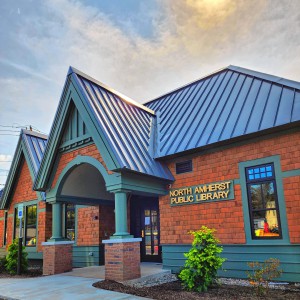Book Bag: ‘The Fairest in the Land’ and I Can Be … Me!’ by Lesléa Newman; ‘Once There Was’ by Corrine Demas
| Published: 04-28-2023 5:37 PM |
The Fairest in the Land
By Lesléa Newman
Illustrated by Joshua Heinz
Abrams Books for Young Readers
I Can Be … Me!
By Lesléa Newman
Illustrated by Maya Christina Gonzalez
Article continues after...
Yesterday's Most Read Articles
 A Waterfront revival: Two years after buying closed tavern, Holyoke couple set to open new event venue
A Waterfront revival: Two years after buying closed tavern, Holyoke couple set to open new event venue
 ‘We can just be who we are’: Thousands show support for LGBTQ community at Hampshire Pride
‘We can just be who we are’: Thousands show support for LGBTQ community at Hampshire Pride
 3-unit, 10-bed house in backyard called too much for Amherst historic district
3-unit, 10-bed house in backyard called too much for Amherst historic district
 ‘Home away from home’: North Amherst Library officially dedicated, as anonymous donor of $1.7M revealed
‘Home away from home’: North Amherst Library officially dedicated, as anonymous donor of $1.7M revealed
 UMass basketball: Matt Cross announces he’s transferring to SMU for final year of eligibility
UMass basketball: Matt Cross announces he’s transferring to SMU for final year of eligibility
 Retired superintendent to lead Hampshire Regional Schools on interim basis while search for permanent boss continues
Retired superintendent to lead Hampshire Regional Schools on interim basis while search for permanent boss continues
Lew & Low Books
Holyoke poet and children’s author Lesléa Newman, who’s written some 75 books according to her website, gained national prominence in 1989 for her children’s book, “Heather Has Two Mommies,” one of the first children’s books to explore LGBTQ issues.
In two of her newest titles for young children, Newman, who’s also written essays and short stories, delves into the topic of gender identity, though that actual term is never employed.
Instead, in both “The Fairest in the Land” and “I Can Be … Me!” children experiment with play and activities that historically have been defined as suited for either girls or boys — but, as Newman sees it, should be open to anyone.
In “The Fairest in the Land,” blond-haired, light-skinned Benjamin and dark-haired, darker-skinned Annabelle decide to play dress-up, and Annabelle asks Benjamin want he wants to be.
“I’ll be a bride,” says Benjamin, “and you can marry me.”
So Benjamin puts on a gown and wears flowers in his hair, while Annabelle somewhat reluctantly dons “a handsome suit” and a top hat.
Play proceeds along similar lines as the two dress up in ballet costumes and then as a prince and princess, with Annabelle taking on the traditional male roles. But she’s not happy about it, so Benjamin suggests they can both be princesses, delighting Annabelle.
Some of their friends join in for a party that is “quite grand. / It’s always best best when every guest’s / the Fairest in the Land!”
Newman dedicates the story to “kids and grown-ups everywhere whose wish is to been seen for who they are: a splendid prince or princess, king, or QUEEN!”
“There have been a number of picture books that have told boys it’s OK to wear dresses,” writes Kirkus Review, “but this one handles the topic of gender expression with particular nuance and care.”
And in “I Can Be ...Me!” a group of children play with a wide variety of toys and gear, or get involved in different games, that span a wide spectrum.
“I can decorate birthday cakes twelve layers high, / or build twenty towers as tall as the sky,” the text reads in one part. “I can race motorcycles with cars, trucks, and jeeps, / or sing lullabies as my baby doll sleeps.”
The children in the colorfully drawn book aren’t readily identifiable as girls or boys — and that’s deliberate, illustrator Maya Christina Gonzalez writes in an introductory note.
“I created a group of kids with the personal challenge of showing just how playful and fluid each of them could be in terms of everything!” she says. “I encourage you fabulous readers to join me in not making assumptions about who any of these kids are.”
“They are who they are, and they are everything they want to be,” Gonzalez adds.
Newman also notes that she wrote the story “to celebrate gender creativity and present a world in which all children are free to be their true authentic selves.”
Once There Was
By Corrine Demas
Illustrated by Gemma Capdevilla
Cameron + Company
The newest book by Amherst author Corrine Demas, who writes for children and adults, is a sort of telescoping story that eventually comes full circle, in which the main character, a little girl “who lived in a vine-colored cottage by the sea,” imagines she’s a princess living in a castle.
The princess, in turn, imagines she’s a horse “with a flowing mane who lived in a meadow filled with flowers.” And the horse, for its part, imagines it’s a tree “with a tall, straight trunk and a crown of leafy leaves.”
The sequence moves on, each “character” in turn imagining another existence that eventually embraces the sky, the sea, and the moon, driving a message that it’s important to think about dreams and transformation — and to appreciate the wide and varied world we live in.
That message is nicely transmitted by beautiful watercolor illustrations by Gemma Capdevila, an artist in Barcelona, Spain whose work captures the beauty of nature and of dreams.
Steve Pfarrer can be reached at spfarrer@gazettenet.com.

 Easthampton author Emily Nagoski has done the research: It’s OK to love your body
Easthampton author Emily Nagoski has done the research: It’s OK to love your body Earth Matters: Honoring a local hero: After 40 years, Hitchcock Center bids farewell to educator and creative leader, Colleen Kelley
Earth Matters: Honoring a local hero: After 40 years, Hitchcock Center bids farewell to educator and creative leader, Colleen Kelley Valley Bounty: Delivering local food onto students’ plates: Marty’s Local connects farms to businesses
Valley Bounty: Delivering local food onto students’ plates: Marty’s Local connects farms to businesses Let’s Talk Relationships: Breaking up is hard to do: These tools can help it feel easier
Let’s Talk Relationships: Breaking up is hard to do: These tools can help it feel easier
